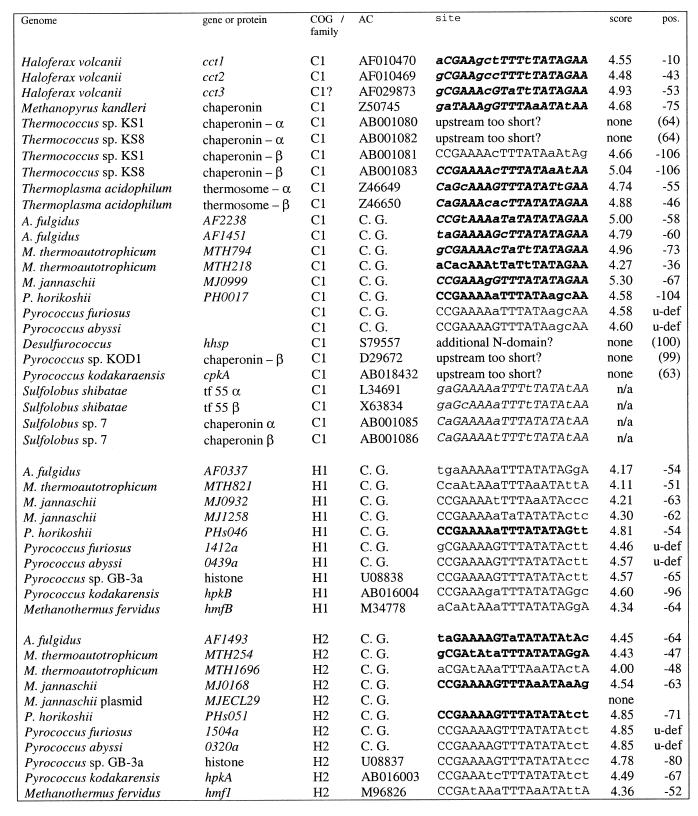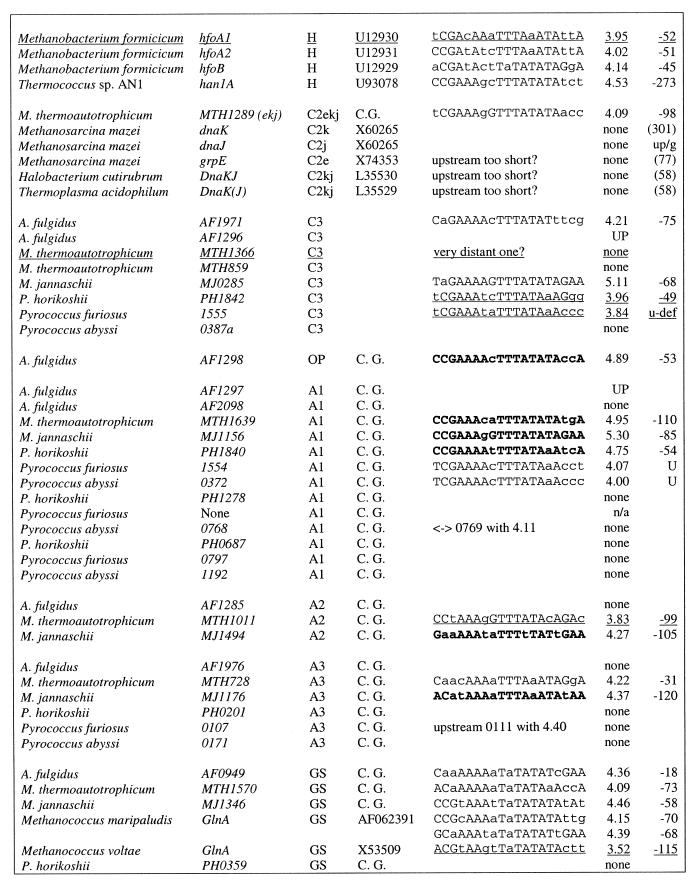Table 1. Heat shock regulatory sites in archaea.
Italic, the initial sample taken from Kuo et al. (22); the remaining sites were predicted in this work; bold (bold italic), sites used for profile construction; underlined, weak sites (score below 4.0); capitals, nucleotides conforming to the consensus. All members of the relevant families are presented. Notation of COGs: H1, archaeal histone, histone H4 ortholog, first COG; H2, archaeal histone, histone H4 ortholog, second COG; H, archaeal histone, histone H4 ortholog; C1, chaperonin (small heat shock protein, thermosome subunit); C2, grpE–dnaK–dnaJ operon or parts hereof; C3, small heat shock protein (hsp20, class I chaperone); A1, AAA superfamily ATPase, cell cycle control, first COG; A2, AAA superfamily ATPase, cell cycle control, second COG; A3, AAA superfamily and related ATPases, ATP-dependent 26S protease regulatory subunit; OP, gene upstream of an operon containing A1 and C3 genes (see text and Fig. 1); GS, glutamine synthase. UP in column score indicates that an upstream gene is regulated; n/a stands for non-applicable; numbers in parentheses in the pos. column give the length of the upstream region if no site was found (position of the first coding nucleotide is given); up/g indicates that there is an upstream gene; u-def means that gene is the not mapped; C.G. in column AC stands for complete genome [note that the site upstream of M.thermoautotrophicum gene MTH794 was annotated in Fig. 3 of Smith et al. (37) as being upstream of gene MTH1817].



